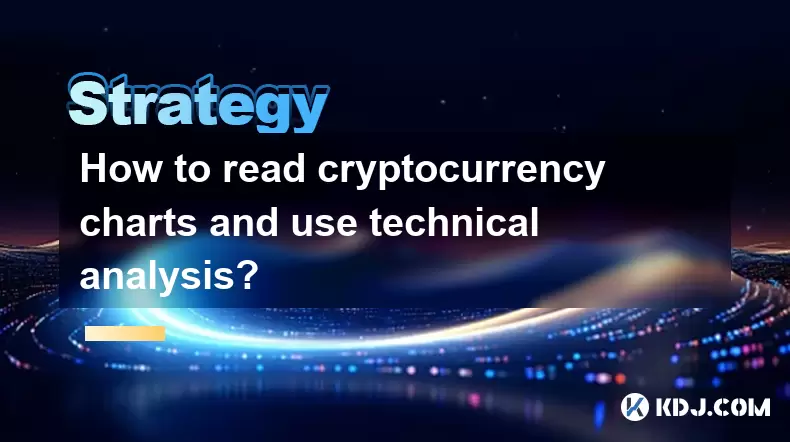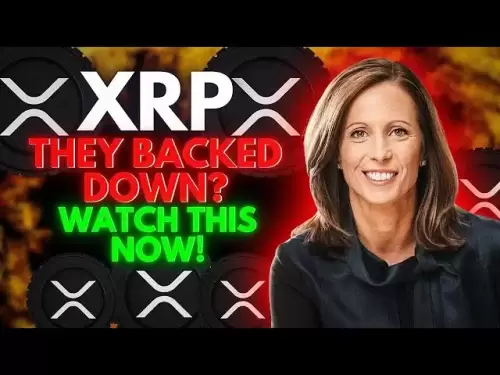-
 Bitcoin
Bitcoin $117500
2.15% -
 Ethereum
Ethereum $3911
6.19% -
 XRP
XRP $3.316
10.79% -
 Tether USDt
Tether USDt $1.000
0.01% -
 BNB
BNB $787.2
2.24% -
 Solana
Solana $175.2
4.15% -
 USDC
USDC $0.9999
0.00% -
 Dogecoin
Dogecoin $0.2225
8.40% -
 TRON
TRON $0.3383
0.28% -
 Cardano
Cardano $0.7868
6.02% -
 Stellar
Stellar $0.4382
9.34% -
 Hyperliquid
Hyperliquid $40.92
7.56% -
 Sui
Sui $3.764
7.63% -
 Chainlink
Chainlink $18.48
10.66% -
 Bitcoin Cash
Bitcoin Cash $582.1
1.88% -
 Hedera
Hedera $0.2601
6.30% -
 Avalanche
Avalanche $23.33
4.94% -
 Ethena USDe
Ethena USDe $1.001
0.02% -
 Litecoin
Litecoin $122.3
2.04% -
 UNUS SED LEO
UNUS SED LEO $8.969
-0.27% -
 Toncoin
Toncoin $3.339
0.86% -
 Shiba Inu
Shiba Inu $0.00001287
4.30% -
 Uniswap
Uniswap $10.43
7.38% -
 Polkadot
Polkadot $3.861
5.08% -
 Dai
Dai $1.000
0.02% -
 Bitget Token
Bitget Token $4.513
3.41% -
 Monero
Monero $267.7
-6.18% -
 Cronos
Cronos $0.1499
4.14% -
 Pepe
Pepe $0.00001110
5.15% -
 Aave
Aave $284.9
8.28%
Should I reverse the operation when the long-short ratio of SHIB perpetual contract reaches 3:1?
When the long-short ratio for SHIB perpetual contracts hits 3:1, it signals strong bullish sentiment but may also precede a price correction; consider market conditions before reversing positions.
Apr 19, 2025 at 04:36 am

Understanding the Long-Short Ratio in SHIB Perpetual Contracts
The long-short ratio is a key metric in the world of cryptocurrency trading, particularly when dealing with perpetual contracts. For SHIB (Shiba Inu) perpetual contracts, this ratio indicates the balance between traders who are betting on the price of SHIB to rise (long positions) and those betting on the price to fall (short positions). When the long-short ratio reaches 3:1, it means there are three times as many long positions as short positions. This imbalance can signal potential market movements and influence trading strategies.
The Implications of a 3:1 Long-Short Ratio
A long-short ratio of 3:1 for SHIB perpetual contracts suggests a significant bullish sentiment among traders. This high ratio could indicate that the market is overly optimistic about SHIB's future price increase. However, such an imbalance can also be a precursor to a potential price correction. When the market becomes too one-sided, it often leads to a reversal as traders who are on the losing side (shorts) start to cover their positions, which can trigger a price drop.
Should You Reverse Your Position?
Reversing your position when the long-short ratio reaches 3:1 is a strategic decision that depends on various factors. One should consider the overall market sentiment, technical indicators, and fundamental analysis before making such a move. If you believe the market is overbought and due for a correction, reversing from a long to a short position might be a profitable strategy. Conversely, if you think the bullish trend will continue, holding or even increasing your long position could be more beneficial.
Steps to Reverse Your Position on SHIB Perpetual Contracts
If you decide to reverse your position when the long-short ratio of SHIB perpetual contracts reaches 3:1, follow these steps:
- Log into your trading platform: Ensure you have access to your account on a reputable cryptocurrency exchange that offers SHIB perpetual contracts.
- Navigate to the SHIB perpetual contract section: Find the specific trading pair for SHIB perpetual contracts.
- Check your current position: Verify whether you are currently holding a long or short position on SHIB.
- Close your existing position: If you are long, you will need to sell your SHIB contracts. If you are short, you will need to buy them back.
- Open the opposite position: After closing your current position, immediately open a new position in the opposite direction. If you were long, you will now short SHIB, and if you were short, you will go long.
Analyzing Market Conditions Before Reversing
Before making any trading decisions, it's crucial to analyze the current market conditions. Look at other indicators such as the Relative Strength Index (RSI), Moving Averages, and volume to get a comprehensive view of the market. If the RSI is above 70, it might indicate that SHIB is overbought, supporting the decision to reverse your position. Additionally, check for any significant news or events that could impact SHIB's price.
Risk Management and Position Sizing
When considering reversing your position, effective risk management is essential. Determine your position size based on your risk tolerance and the potential impact of the trade on your overall portfolio. Use stop-loss orders to limit potential losses if the market moves against your new position. For example, if you reverse to a short position, set a stop-loss order above the current price to protect against an unexpected price surge.
Monitoring Your Position Post-Reversal
After reversing your position, continuous monitoring is crucial. Keep an eye on the long-short ratio and other market indicators to assess whether your decision was correct. If the market moves in your favor, consider taking profits at predetermined levels. Conversely, if the market moves against you, be prepared to adjust your stop-loss or close the position to minimize losses.
Frequently Asked Questions
Q: What other factors should I consider besides the long-short ratio when deciding to reverse my position on SHIB perpetual contracts?
A: In addition to the long-short ratio, consider the following factors:
- Technical indicators: Use tools like RSI, MACD, and Moving Averages to gauge market momentum and potential reversals.
- Fundamental analysis: Look at any upcoming events, news, or developments related to SHIB that could impact its price.
- Market sentiment: Assess the overall sentiment in the crypto market, as it can influence SHIB's price movements.
Q: How can I determine if the long-short ratio of 3:1 is a reliable signal to reverse my position?
A: The reliability of the long-short ratio as a signal depends on several factors:
- Historical data: Analyze past instances when the ratio reached 3:1 and the subsequent market movements.
- Correlation with price: Check if there's a consistent correlation between the ratio and SHIB's price changes.
- Market context: Consider the broader market environment and whether other indicators support the signal.
Q: What are the potential risks of reversing my position based solely on the long-short ratio?
A: Reversing your position based solely on the long-short ratio carries several risks:
- False signals: The ratio might not always accurately predict market movements, leading to potential losses.
- Market volatility: Cryptocurrency markets can be highly volatile, and sudden price swings can invalidate your strategy.
- Over-reliance on a single indicator: Using only one metric can lead to overlooking other important factors that influence SHIB's price.
Q: Can the long-short ratio be manipulated by large traders or whales?
A: Yes, the long-short ratio can be influenced by large traders or whales:
- Position manipulation: Large traders can open significant positions to skew the ratio, potentially triggering market reactions.
- Market impact: Whales might use the ratio to their advantage, creating false signals to profit from smaller traders' reactions.
- Liquidity considerations: In less liquid markets, the actions of large traders can have a more pronounced effect on the ratio.
Disclaimer:info@kdj.com
The information provided is not trading advice. kdj.com does not assume any responsibility for any investments made based on the information provided in this article. Cryptocurrencies are highly volatile and it is highly recommended that you invest with caution after thorough research!
If you believe that the content used on this website infringes your copyright, please contact us immediately (info@kdj.com) and we will delete it promptly.
- Tron's Sell-Off Spurs Altcoin Shift: What's Next for TRX?
- 2025-08-08 08:30:12
- RUVI Presale: Is the Growth Potential Real?
- 2025-08-08 09:10:12
- Sleep Token's US Takeover: Thornhill Rides the 'Even In Arcadia' Wave
- 2025-08-08 08:30:12
- FTT Token's Wild Ride: Creditor Repayments vs. Market Drop - A New Yorker's Take
- 2025-08-08 07:10:12
- Floki Crypto Price Prediction: Riding the Robinhood Rocket or Just a Meme?
- 2025-08-08 07:15:12
- EigenLayer, Restaking, and Ethereum: Navigating the Hype and the Hazards
- 2025-08-08 06:30:12
Related knowledge

How to read cryptocurrency charts and use technical analysis?
Aug 08,2025 at 11:08am
Understanding the Basics of Cryptocurrency ChartsCryptocurrency charts are graphical representations of price movements over time. These charts are es...

How to avoid common crypto investment mistakes?
Jul 13,2025 at 01:35am
Understanding the Risks of Crypto InvestmentInvesting in cryptocurrency can be highly rewarding, but it also comes with significant risks. One of the ...

What is a long-short crypto strategy?
Jul 15,2025 at 10:56am
Understanding the Basics of a Long-Short Crypto StrategyA long-short crypto strategy is an investment approach where traders simultaneously take long ...

What is a long-short crypto strategy?
Jul 11,2025 at 01:28pm
Understanding the Basics of Long-Short Crypto StrategyA long-short crypto strategy is an investment approach where traders take both long and short po...

How to use the RSI indicator for crypto?
Jul 12,2025 at 03:56pm
Understanding the RSI Indicator in Cryptocurrency TradingThe Relative Strength Index (RSI) is a momentum oscillator used to measure the speed and chan...

Is copy trading a good strategy for crypto beginners?
Jul 12,2025 at 08:28am
Understanding Copy Trading in the Cryptocurrency MarketCopy trading is a strategy where novice traders replicate the trades of experienced investors a...

How to read cryptocurrency charts and use technical analysis?
Aug 08,2025 at 11:08am
Understanding the Basics of Cryptocurrency ChartsCryptocurrency charts are graphical representations of price movements over time. These charts are es...

How to avoid common crypto investment mistakes?
Jul 13,2025 at 01:35am
Understanding the Risks of Crypto InvestmentInvesting in cryptocurrency can be highly rewarding, but it also comes with significant risks. One of the ...

What is a long-short crypto strategy?
Jul 15,2025 at 10:56am
Understanding the Basics of a Long-Short Crypto StrategyA long-short crypto strategy is an investment approach where traders simultaneously take long ...

What is a long-short crypto strategy?
Jul 11,2025 at 01:28pm
Understanding the Basics of Long-Short Crypto StrategyA long-short crypto strategy is an investment approach where traders take both long and short po...

How to use the RSI indicator for crypto?
Jul 12,2025 at 03:56pm
Understanding the RSI Indicator in Cryptocurrency TradingThe Relative Strength Index (RSI) is a momentum oscillator used to measure the speed and chan...

Is copy trading a good strategy for crypto beginners?
Jul 12,2025 at 08:28am
Understanding Copy Trading in the Cryptocurrency MarketCopy trading is a strategy where novice traders replicate the trades of experienced investors a...
See all articles

























































































